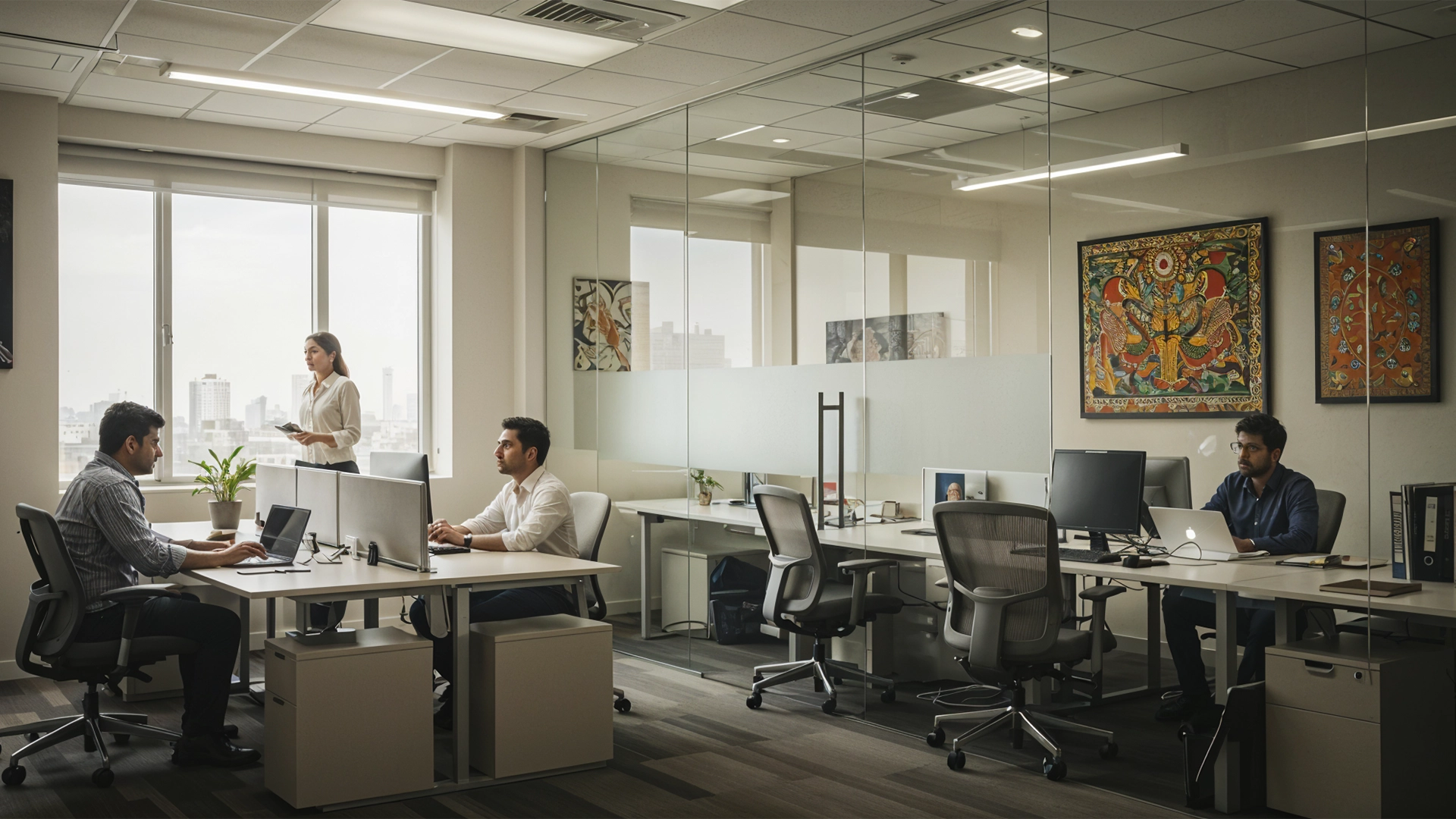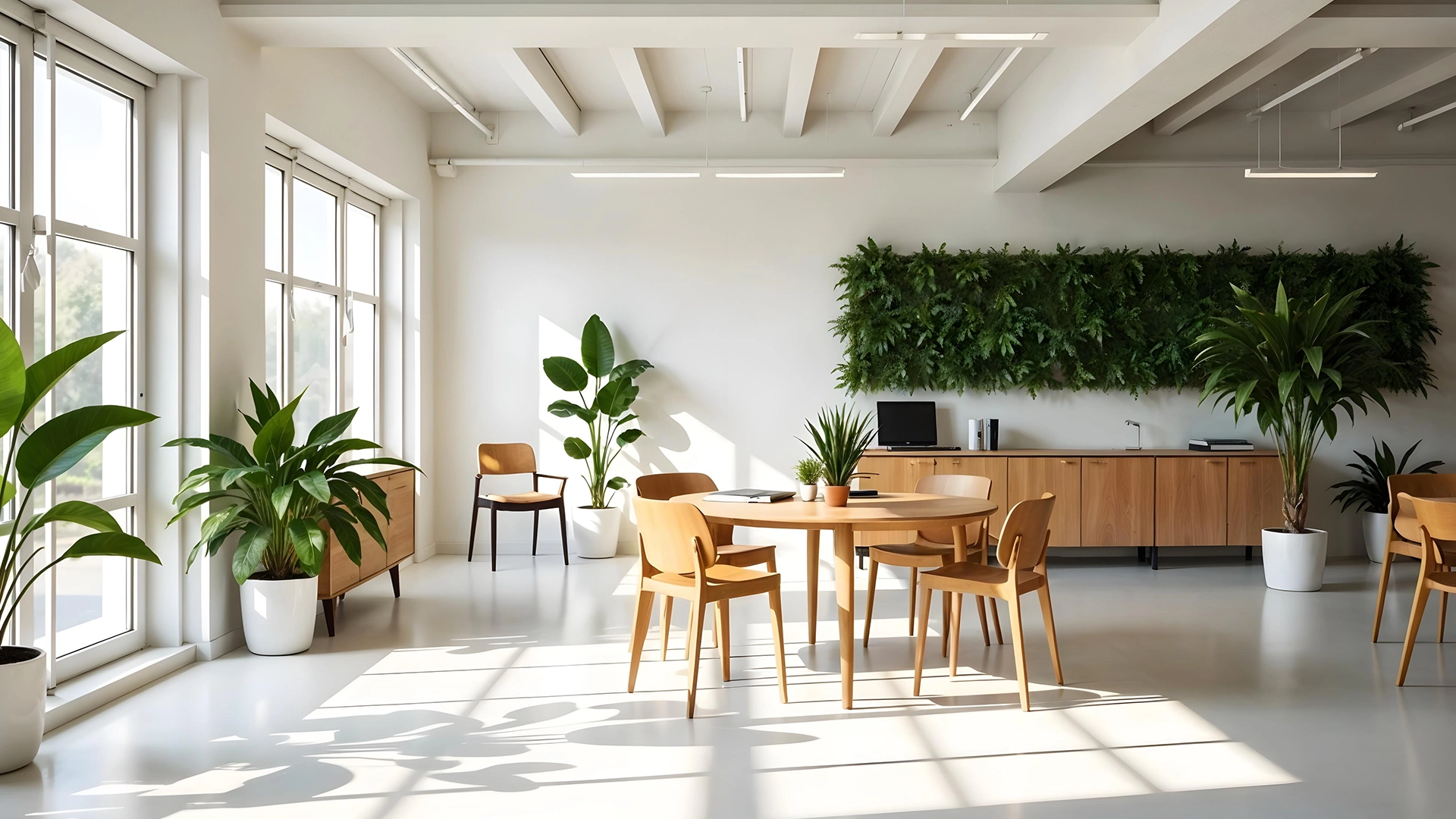Imagine this: You step into a sleek, well-equipped room, ready to close a significant deal. But—oops!—there's no screen to share your pitch deck. No reliable Wi-Fi. There is no quiet space to focus. Your game-changing presentation? Derailed. Setting the stage for success is more important than choosing a comfortable location.
Organizations often confuse meeting rooms and conference rooms, but it's important to understand the difference. Selecting the ideal location can boost team productivity, improve teamwork, and close deals when it counts most.
Which one should you reserve, then? Let's take a look.
Meeting Room vs. Conference Room: Which is the Right Choice for Your Business?
March 06, 2025 | Workspace

What is a Meeting Room vs. a Conference Room?
- Meeting Room:
When you need a distraction-free space to concentrate, brainstorm, or catch up with a colleague, meeting rooms are perfect. Usually, they have only the most basic equipment, like a TV screen, a whiteboard, or a small table. Smaller and more intimate, meeting rooms are ideal for internal discussions, brainstorming sessions, and one-on-one meetings. They are ideal for making decisions quickly and working in a flexible team.
- Conference Room:
A larger, more formal setting designed for remote collaborations, board meetings, client presentations, and big-picture conversations often outfitted with cutting-edge technology and presentation aids. Conference rooms help create a professional setting for essential discussions. They're often booked for high-stakes meetings where structure and clarity matter. With more space, better equipment, and a professional setup, they make it easy to run smooth, productive discussions.
Features of a Conference Room vs. a Meeting Room
- Conference Room Features
1. Ample space Accommodating 10+ People
Need room to spread out? Conference rooms cater to larger teams, ensuring everyone has a seat at the table. These spaces are designed to host significant discussions without feeling cramped.
2. High-tech equipment (Projectors, Screens, Video Conferencing Tools)
Modern conference spaces have all the bells and whistles—high-quality displays, video conferencing tools, and interactive screens—so you can seamlessly collaborate with remote teams and nail every presentation.
3. Formal Seating Arrangement (Boardroom Style, Theater Style)
From boardroom layouts to auditorium-style setups, conference rooms provide a structured space that enhances focus and productivity during high-stakes meetings.
4. Ideal for External Meetings with Clients, Stakeholders, or Investors
First impressions count. Meeting with outside partners is made more credible and professional with a well-equipped, well-maintained conference room.
5. Professional Ambiance with Soundproofing and Presentation Facilities
Whether closing a deal or discussing confidential strategies, conference spaces offer soundproof environments designed for clarity and discretion.
- Meeting Room Features
1. Compact Space for Smaller Teams (2-10 People)
Meeting rooms are designed for agility. They're perfect for team huddles, strategy sessions, and those quick morning check-ins.
2. Essential Equipment Like a Whiteboard, TV Screen, or Projector
Sometimes, you only need a whiteboard, notepad, and fresh ideas. Many meeting rooms come with minimal tech to keep things simple and effective.
3. Informal Seating (Round Tables, Couches, or Collaboration Desks)
Unlike rigid conference spaces, meeting rooms often feature relaxed seating to encourage a free flow of ideas and creativity.
4. Ideal for Team Meetings, Brainstorming Sessions, and Quick Check-ins
Do you need a quiet space to discuss details before a big launch? A meeting rooms is your go-to for planning, problem-solving, and collaboration.
5. Easily Accessible Within Office Spaces for Daily Use
Unlike conference rooms , which often require prior booking, meeting rooms are flexible and accessible, making them ideal for spontaneous team discussions.
When to Opt for a Conference Room?
1. Formal Presentations
A hazardous pitch or a key selling point? The space, technology, and atmosphere required to create a lasting impression are provided by a conference room.
2. High-Stakes Decision Making
Annual reviews, investor talks, or executive meetings? These call for a professional, attention-grabbing conference room free from distractions.
3. Remote Collaboration
International meetings in today's hybrid workplace require dependable conference rooms with smooth video conferencing features.
4. Confidential Discussions
HR discussions, financial meetings, or strategic planning require privacy. Conference rooms are designed for secure, focused conversations.
5. Large-Scale Planning
When planning a product launch, restructuring, or company expansion, you need a conference room where everyone can contribute to the conversation.
When to Choose a Meeting Room?
1. Team Brainstorming
Need a creativity boost? Meeting rooms provide a casual space to toss ideas and solve problems without the pressure of a formal setting.
2. One-on-One Meetings
Performance reviews, mentorship chats, or client check-ins—meeting rooms offer the perfect setting for personal, focused conversations.
3. Casual Internal Meetings
Quick stand-ups, project updates, or status reviews? A meeting room keeps things simple and efficient.
4. Training or Workshops
conference spaces with small, targeted meeting rooms are excellent for experiential learning, whether you're hosting a skills course or onboarding new hires.
5. Ad-Hoc Conversations
Is it necessary to reserve a spot at the last minute? Meeting spaces are perfect for spontaneous conversations because they are adaptable and easily accessible.
Deciding Factors for Choosing Between a Meeting Room and a Conference Room
1. Size & Capacity
You'll need a conference room if you're hosting a large group. However, a meeting room will do the trick for a small team meeting.
2. Technology Needs
Conference spaces come loaded with advanced tech. A meeting room will be more than enough if you only need a whiteboard.
3. Meeting Type
Need a polished space for external visitors? A conference room is the answer. A meeting room will work just fine if it's an internal huddle.
4. Budget Considerations
Conference rooms cost more due to their size and tech setup. However, meeting rooms in coworking spaces offer great flexibility and are a cost-effective option.
Conclusion
The ideal environment may foster achievement, improve teamwork, and increase production.
Do you need something informal? Your best option is a meeting room. Organizing a significant event? The best option is to use a conference room.
Think about your budget, technological needs, and business needs before making a decision. Do you need assistance creating the ideal meeting room? Get professional guidance by contacting us.
Do you need something informal? Your best option is a meeting room. Organizing a significant event? The best option is to use a conference room.
Think about your budget, technological needs, and business needs before making a decision. Do you need assistance creating the ideal meeting room? Get professional guidance by contacting us.




